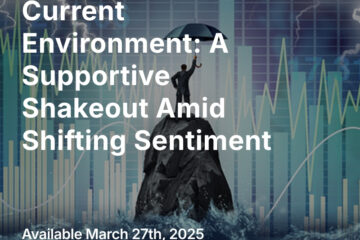Stay liquid. This is not the time to be locking yourself into anything unless you absolutely must (e.g., you need to make a 1031 exchange). In our view, current conditions and the speed of current developments indicate a cardinal truth for investing in 2022: liquidity and optionality are king.
This will be the theme of our upcoming conference call, which we’ll host at 10 AM Pacific on March 24. Please join us — you can click here to register today.
Obviously, current conditions favor many commodities, commodity producers, precious metals, and cryptocurrencies. This is a longer-term theme than the current crisis-driven spikes, which may resolve themselves in coming months as the situation in Ukraine is stabilized. Tail risks of financial or currency instability — which we regard as unlikely, but non-trivial — argue for both gold and decentralized crypto.
We remain hopeful that diplomacy can end the bloodshed in Ukraine. However, in the event that the situation in Ukraine is not stabilized, and the fighting moves into a phase of prolonged guerrilla warfare, further volatility lies ahead. In the event the war moves beyond Ukraine, the word “volatility” will not be a sufficient descriptor.
Energy, metals, and agriculture resource prices have been rising rapidly. They got to overbought levels on many measures, and need a rest. Longer term, there are plenty of reasons for their uptrend to resume. We continue to like gold, gold miners, and essential tech-adjacent minerals, including copper, nickel, and rare earths, as well as uranium and lithium. We believe that longer-term ramifications of Russia’s actions, and of a strengthening Russia/China axis, will be an intensification of the push for reshoring of critical manufacturing and mineral production capacity to the United States. This is particularly relevant to tech-essential base metals mentioned above, rare earths, and semiconductors.
We also believe that current events suggest a multi-year growth impulse for defense stocks, given the Pentagon’s newly stated need for the capacity to fight a global two-front war, and Germany’s decision to sharply ramp defense spending. The same changing priorities also underscore the need for cybersecurity even more sharply, as we believe the most intensely contested battlespace moving forward will be virtual.
With all that said, we still believe that the technological shift of the Fourth Industrial Revolution — towards networking, AI, cloud, big data, process digitization, and so on — is intact, in spite of the flirting of the NASDAQ with a bear market. Perhaps comparisons with the last tech bubble will arise. We note that while there are profitless wonders aplenty in the tech space — and while the unicorn hunters are now venture capitalists armed with “down round” blunderbusses — the leaders of the NASDAQ are world-dominating behemoths with tsunami-level cash flows, fortress balance sheets, juggernaut business models, and deep ties to government. The NASDAQ of today is a different creature than it was in 2000. There are gems in the rubble of the decline.
To be clear, we are looking for gems in the rubble… not gems in the ruble.
Thanks for listening; we welcome your calls and questions.



